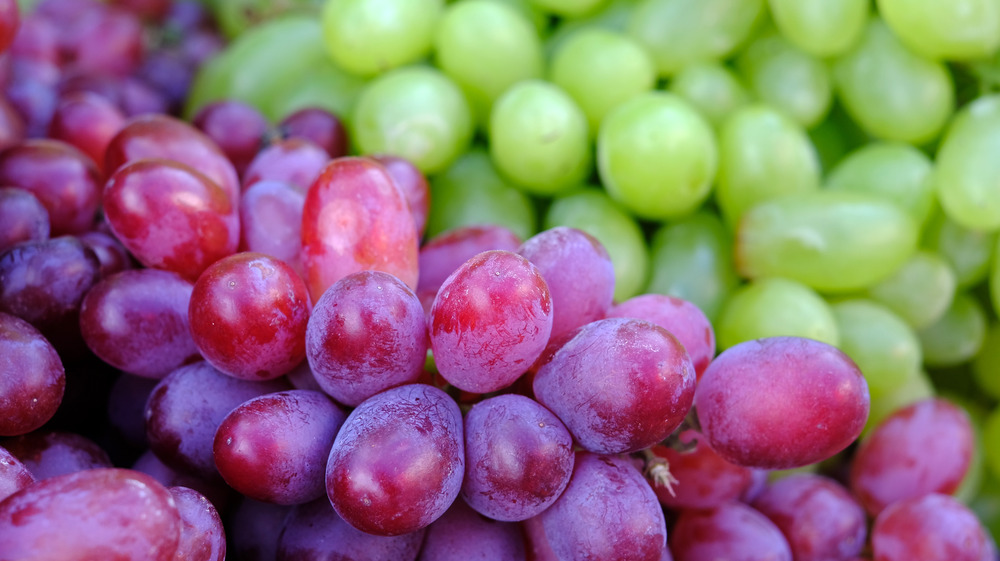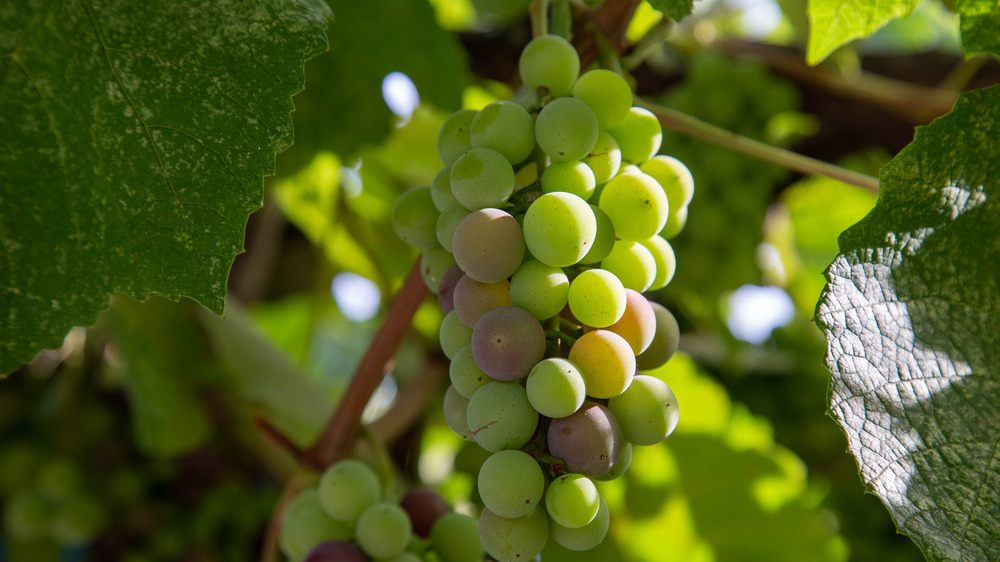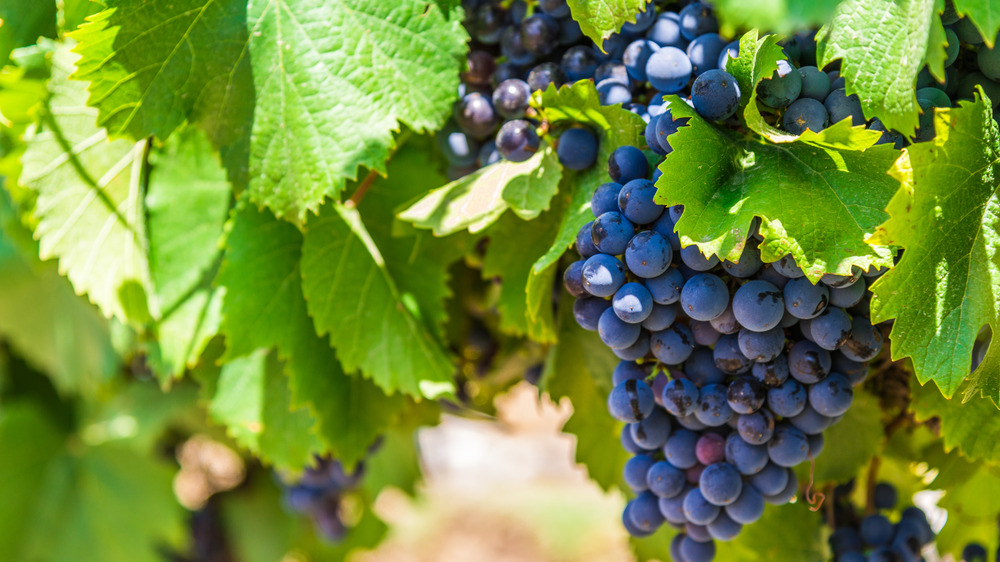What Is Verjus And How Do You Use It?
Acid is an integral component to all recipes. Usually provided by vinegar, wine, or some sort of citrus juice, acid adds balance, complexity, depth, and a burst of flavor to dishes both sweet and savory. Verjus is an often under-utilized ingredient that is also capable of providing that necessary acid component to dishes — and then some.
Verjus (or verjuice) — pronounced "vair-zhoo" — is an unfermented grape juice, acting almost as a mid-point between vinegar and wine. It is entirely non-alcoholic, comes in both red and white varieties, and is "sweet-tart" with a "gentler flavor than vinegar." The term "vert jus" translates to green juice, and the product itself comes from high-acid, low-sugar grapes that haven't fermented (via Bon Appetit).
According to Fine Cooking, unripe grapes are picked — allowing other grapes to further mature and ripen for winemaking — and those 'thinned' grapes are pressed. Mountain Feed notes that this "whisper of sweetness" comes from the just-developing sugar present in the unripened grape, and that the flavors of verjus vary dependent on the region, just like wine. Old Westminster notes that a sip of verjus induces a similar reaction as the feeling right before biting into a ripe apple.
How was verjus used in the past?
Verjus was traditionally used as both a medical salve and a ubiquitous cooking ingredient in the Middle Ages, primarily in Rome, France, and across Europe, according to Vinegar Shed. It was even mentioned in a 'medieval handbook on well-being' called Tacuinum Sanitatis, which states that verjus can stimulate the immune system, reduce stroke risk and high cholesterol, and promote liver health. Cleveland Magazine also notes that verjus was also once used as a remedy to soothe "sour stomach" and "thirsty liver."
According to The New York Times, myriad cuisines incorporated tart fruits into cooking, but once lemon (an "interloper that was introduced to Europe by returning Crusaders") became commonplace, verjus quickly fell out of favor. This changed in the 1980s, though, when Australian celebrity cook Maggie Beer re-popularized the ingredient, and — as they say — the rest is history.
Verjus has yet again become widely used, primarily used in Syrian and Persian cooking, as well as super-popular cocktail ingredient worldwide. Verjus also contains tartaric acid — the same acid found in wine — so it lends the same flavor profile to sauces, stews, and glazes when reduced, but without any alcohol whatsoever. It is also said to be generally less harsh, but just as adept as enhancing or brightening flavors, whether the dish is savory or sweet.
What are the best ways to use verjus?
Verjus is commonly used in reduced sauces to accompany various proteins, as well as in salad dressings. In addition, Liquor.com notes that it is now very popular in craft cocktails, referring to it as a "tart elixir" and noting that it helps to offset a drink's inherent sweetness in a way that's gentler than common citrus juice. Andy Bixby, the creative director of beverage at The Imperial in Washington, DC, notes that verjus "has an astringency and tannic quality, as well as a heavier hold on the palate."
Another perk of verjus is its inclusion in sauces, dressings, and other dishes does not interfere with the flavors of any accompanying wines, which some acidic dishes often do. It can also be used in higher quantities than citrus juice or vinegar. It's delicious served simply with water or carbonated water — or even on the rocks! It also is delicious when served with fruit (raw, poached, grilled, baked, etc.), as a reduced syrup, or even as a jelly.
So next time, instead of reaching for the balsamic vinegar or that trusty bottle of red wine, try out some Verjus. Your taste buds may thank you for it.


